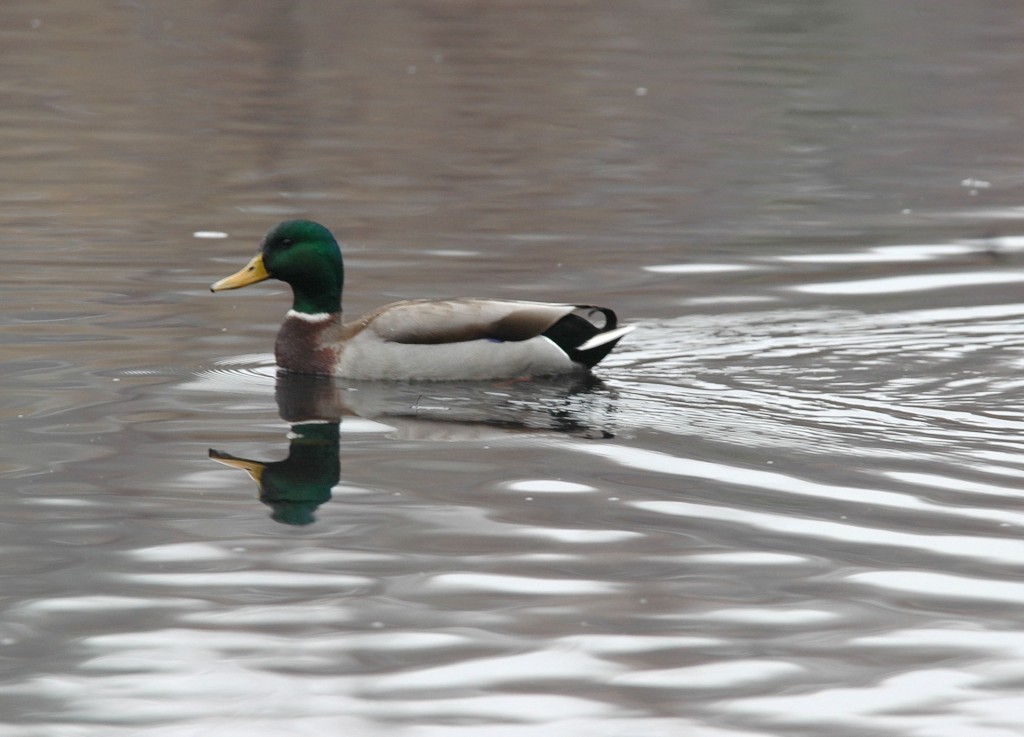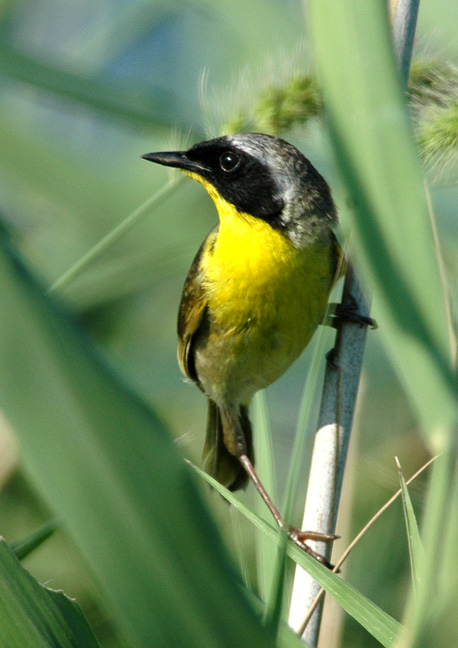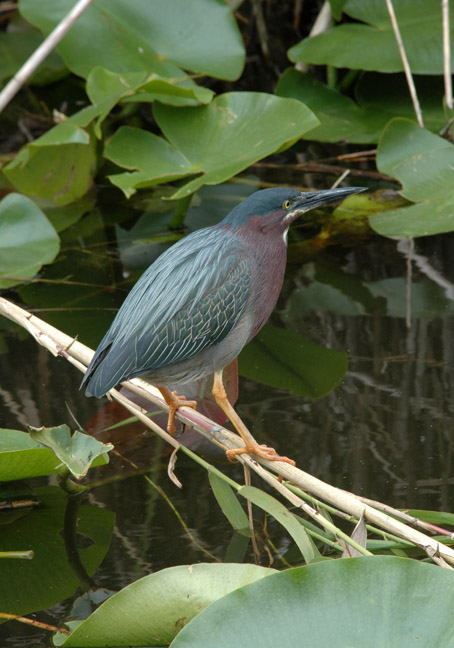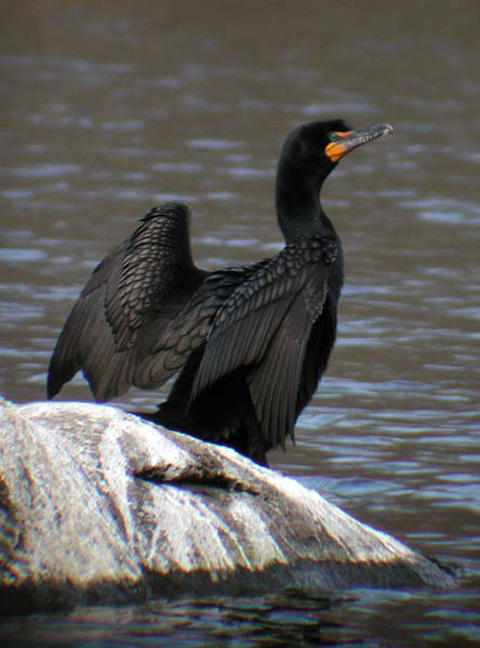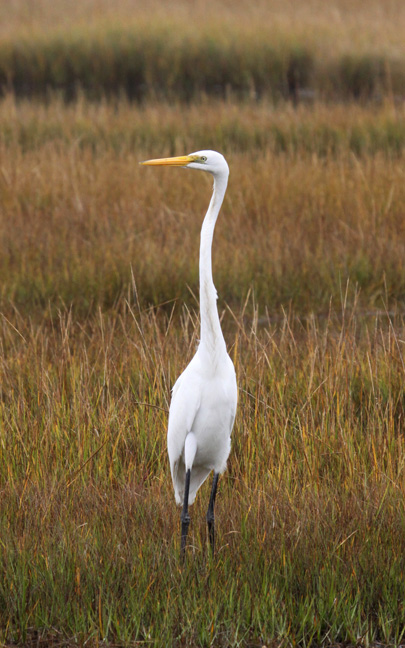Beginners Quiz #2
Beginners quiz #2
This quiz contains the bird species that are most commonly encountered across the United States. Of course, 'common' is a relative term...some of these species are common only for part of the year, others are common only in specific habitats. It is very helpful to become familiar with these species.
Start
Question 1 |
A | Rufous-capped Warbler Hint: Rufous-capped Warbler has a smaller bill with a yellow breast and is rare in North America. |
B | Northern Flicker Hint: Although they are a similar size to this quiz bird and are commonly seen nearby, flickers have spots on the belly and a black chest patch. |
C | Red-bellied Woodpecker Hint: Excellent! A common and fairly large woodpecker. The red color on the lower part of the belly is not always obvious. |
D | Hairy Woodpecker Hint: Hairy Woodpeckers have back-and-white face markings. |
E | Red-headed Woodpecker Hint: No. Don't be fooled by the red cap. Red-headed woodpecker has an all-red head and neck. |
Question 3 |
A | House Sparrow Hint: Yes. This is the common sparrow of most cities and towns. |
B | House Finch |
C | Song Sparrow |
D | Black-throated Gray Warbler |
E | Carolina Chickadee |
Question 4 |
A | Canada Goose Hint: Yes. Our most common goose in the US. |
B | Mute Swan |
C | Brant |
D | Ring-necked Duck |
E | Mallard |
Question 5 |
A | Mallard Hint: Yes. Mallards can often be seen even in city parks. |
B | American Coot |
C | Hooded Merganser |
D | Canada Goose |
E | Green-winged Teal |
Question 6 |
A | Eastern Kingbird Hint: Eastern Kingbird is grayish-black above, not blue. |
B | Indigo Bunting Hint: Try again. Indigo buntings would have more uniform blue body and belly. |
C | Cerulean Warbler Hint: The bill is too small for a warbler; Cerulean warblers also have white wing bars. |
D | Tree Swallow Hint: Well done. Tree Swallows are often seen in large flocks swooping to catch insects in flight. |
E | Eastern Bluebird Hint: Bluebirds would not have the all-white belly seen here. |
Question 7 |
A | American Goldfinch |
B | Common Yellowthroat Hint: Yes! |
C | Yellow Warbler |
D | House Wren |
E | Yellow-throated Vireo |
Question 8 |
A | Osprey Hint: Ospreys are hawk-like birds, but with black-and white faces. |
B | Bald Eagle Hint: An adult Bald Eagle has a white head. |
C | Turkey Vulture Hint: Yes! The naked head is indicative of a vulture. |
D | Common Black Hawk Hint: A Common Black Hawk has black feathers on its head and is rare in North America. |
E | Black Vulture Hint: The Black Vulture has a mostly black head. |
Question 9 |
A | Common Moorhen |
B | American Bittern |
C | Great Blue Heron |
D | Double-crested Cormorant |
E | Green Heron Hint: Very Good! |
Question 10 |
A | Black Vulture |
B | American Black Duck |
C | Anhingha |
D | Common Loon |
E | Double-crested Cormorant Hint: Excellent! |
Question 12 |
A | Long-billed Thrasher Hint: Thrashers are mostly brown, with striped breasts. |
B | Gray Catbird Hint: Catbirds are nearly uniform darker gray with a black cap. |
C | Northern Mockingbird Hint: Yes. The Northern mockingbird is a widespread species, even found in neighborhoods within towns and cities. It has a varied song that can mimic the sounds of other birds. |
D | White-throated Sparrow Hint: White-throated sparrows are mostly brown. |
E | Loggerhead Shrike Hint: Shrikes have a black face mask and black primaries. |
Question 13 |
A | Ivory Gull Hint: Ivory Gulls are all-white with smaller bills. |
B | Herring Gull Hint: Good. The Herring Gull is one of the most common gulls on the eastern coast and one of the largest |
C | Common Tern Hint: Try again. Common Tern has a thinner bill than this bird. |
D | Sea Gull Hint: The term "Sea Gull" does not refer to a specific species. Our quiz bird is often found near salt water though. |
E | Snow Goose Hint: Despite the webbed feet, this is not a goose. |
Question 14 |
A | Carolina Wren Hint: Yes. The perky tail, long bill, and white supercillium are good indicators for Carolina Wren. |
B | House Wren Hint: House wrens do not have the white supercilium above the eye. |
C | Wood Thrush Hint: Try again. Wood Thrush has large dark spots on the breast and belly. |
D | Brown Thrasher Hint: Brown Thrashers have streaked bellies, and yellow eyes without the eyestripe. |
E | House Finch Hint: The bill on a House Finch would be shorter and stubbier, for eating seeds. |
Question 15 |
A | White-breasted Nuthatch Hint: White-breasted nuthatch is all-white around the eyes and throat, with a longer, pointier bill. |
B | Black-capped Chickadee Hint: Yes! In woodlands chickadees often appear in mixed flocks with other species, including Tufted Titmouse and White-breasted Nuthatch. |
C | Boreal Chickadee Hint: Boreal Chickadee has a brown cap. |
D | Tufted Titmouse Hint: Tufted titmouse has gray forehead and crest and is overall more uniform gray on back. |
E | Black-throated gray warbler Hint: Black-throated gray warblers are darker gray with a broad white supercilium above the eye. |
Question 16 |
A | House Wren |
B | Tufted Titmouse |
C | Black-and-white Warbler |
D | Carolina Chickadee |
E | White-breasted Nuthatch |
Question 18 |
A | Tufted Titmouse |
B | Northern Cardinal Hint: Yes. The male cardinal is nearly all-red, with a black face mask. |
C | Vermillion Flycatcher |
D | Carolina Chickadee |
E | Scarlet Tanager |
Question 19 |
A | Tufted Titmouse Hint: Although it has a distinct tuft on its head, the bill is much too large for a Tufted Titmouse. |
B | Rufous Motmot Hint: A Motmot would not be found in North America and does not have a white belly. |
C | Blue Jay Hint: A Blue Jay has bright blue in the wings, not the uniform steely-gray of this bird. |
D | Belted Kingfisher Hint: Well done. The large bill of the Belted Kingfisher is used to catch fish and other food when diving into water. |
E | Eastern Kingbird Hint: Eastern Kingbird has a dark grayish-black back and white belly, with no rufous color. |
There are 20 questions to complete.
← |
→ |
You have completed
questions
question
Your score is
Correct
Wrong
Partial-Credit
You have not finished your quiz. If you leave this page, your progress will be lost.
Correct Answer
You Selected
Not Attempted
Final Score on Quiz
Attempted Questions Correct
Attempted Questions Wrong
Questions Not Attempted
Total Questions on Quiz
Question Details
Results
Date
Score
Hint
Time allowed
minutes
seconds
Time used
Answer Choice(s) Selected
Question Text
All done
Need more practice!
Keep trying!
Not bad!
Good work!
Perfect!




